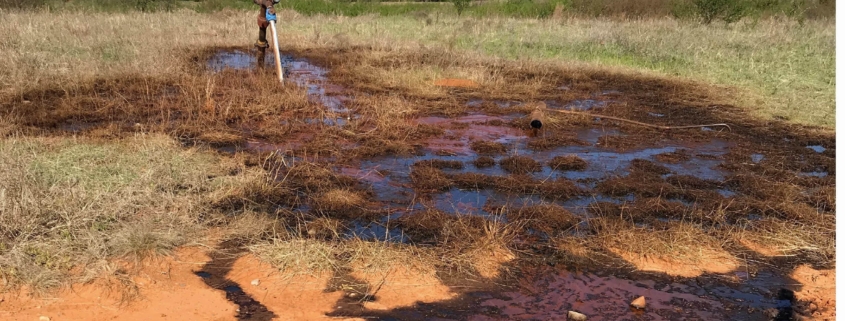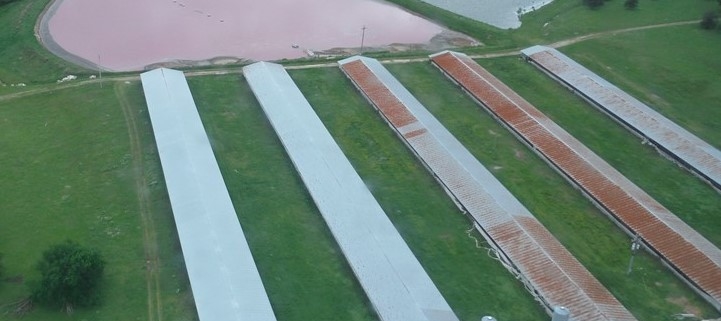Resistivity Imaging Identifies Potential Contaminant Transport Pathway
Resistivity Imaging maps potential subsurface transport pathway in south-central Oklahoma
Lithochimeia was retained to investigate complaints of strong hydrocarbon odors from a spring on in south-central Oklahoma.
Initial sampling indicated the presence of hydrocarbons in waters flowing from the spring after larger rainfall events. Pipelines transporting hydrocarbons traversed the property up-gradient from the spring that exhibited hydrocarbon odors. Lithochimeia conducted a Resistivity Survey to examine the region between the pipelines and the spring for evidence of a pathway existed between the pipelines and the spring. The Resistivity Survey involved obtaining data from forty north-south transects between the pipelines and the spring.

Electrical current was injected into the subsurface via the electrodes of the array and the resulting electrical activity at the surface was measured and interpreted to produce images representing the electrical properties of the subsurface.

The image resulting form the survey revealed potential subsurface transport pathways between the pipelines and the spring. The karst geology of the area and diagonally oriented faults were visible as highly resistive cavernous porosity as well as clay and silt filled porosity in the subsurface.
This 2-D rendering was mapped in 3-D to better visualize the subsurface geometry of the potential transport pathway.


Monitoring wells were installed to both confirm the results of the resistivity survey and to provide access to groundwater for sampling.
Groundwater sampling revealed hydrocarbon signatures similar to those found at the spring.










